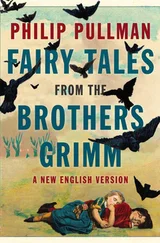Put the vinegar, white wine and shallots into a small, heavy-bottomed pan and heat to boiling point. Simmer until the liquid has reduced to 1 tablespoon, then remove from the heat and add 2 tablespoons of cold water. Leave to cool, then mix in the egg yolks.
Return the pan to a very low heat and whisk in the butter, one hazelnut-sized piece at a time, until the sauce is thick and glossy. Add the tarragon, then taste and season with salt and pepper. If it becomes grainy or begins to ‘split’, add a dessertspoon of iced water and whisk hard. Once made, the sauce will remain stable for half an hour or so if kept in a warm place; just whisk again before serving.
To grill the meat, set a ridged grill pan over a high heat. When it begins to smoke, lay the meat on the pan and cook for 2–3 minutes on each side, turning down the heat a little if it becomes too smoky. The meat will be rare in the centre. Remove from the heat and leave to rest in a warm place for 10 minutes. It should not be so warm that the beef continues to cook. Meanwhile, warm some dinner plates.
To serve, slice the beef across the grain and place a few slices on each plate, with a dollop of sauce beside it.
How to grill or fry meat
Very rareSear the steak on both sides; a finger pressed on the surface will leave an indentation.
RareSear one side, then continue to cook until droplets of blood are visible on the surface. Turn the meat and cook the other side for an equal time. Some resistance should be felt when pressing a finger on to the surface.
MediumSear one side, wait until juices (not blood) begin to emerge on the meat surface, then turn and cook the other side.
Other cheap cuts
The onglet is a muscle that connects the last rib to the kidney. It is brownish in colour and there is a faint delicious flavour of kidney. It is not generally used as a grilling steak in the UK, but if you visit a Continental butcher they will know it immediately – if not as onglet (the French name), then perhaps as lombatello (Italian), or solomillo de pulmón (Spanish). In America it is known as the hanging steak. A keen British butcher, with experience in cutting the Continental way, may be able to prepare it for you. Have a discussion when he hasn’t got an enormous queue.
The onglet weighs about 500g/1lb 2oz and, when trimmed of gristle, it can be grilled or roasted whole (but left rare in the centre), then sliced and served with any of the sauces in the previous two recipes.
In Cork City in Ireland, butchers cut a muscle from the shoulder called the Jewish fillet. It is removed whole and totally trimmed of any connecting tissue or gristle, then – as with the other cuts – grilled whole and sliced. It can be served with the lemon and parsley butter, or with the tarragon butter sauce.
Other butchers elsewhere will have different names for the cuts in the recipes above. I once saw an Italian butcher cut the shoulder muscle as above, but my Italian was too appalling to ask about the name for it. Some butchers call onglet thin steak, others call it feather steak, because it is a V shape with grains leading from a central join. Disagreement over the terms leads only to a healthy debate between butcher and customer – I advise getting stuck in.
Cheap cuts in the pot
Almost any forequarter beef or shin meat is suitable for a slow braise. This is easy territory for butchers, who have loads to spare and are longing to get rid of it. If you can make time, encourage the butcher to give you some of the bones, to roast and then simmer with water the day before the braise so you have a ready supply of stock. Preparing stock takes just minutes – then all you have to do is wait until the pot has done its work.
Braised Shin of Beef with Ale
A slow simmer of beef is the best winter food. Supplemented with mash and piles of roasted root vegetables, a little goes a long way towards feeding a big table of people. Bread brushed with dripping or olive oil and rubbed with garlic, then baked until crisp, can be put in baskets on the table. Make sure you have handfuls of parsley to scatter over the top. If you want to be more adventurous still, grate a little orange zest into the parsley. In February use the zest of blood orange, which is somehow just right with red meat.
Serves 6–8
5–6 tablespoons olive oil or dripping
2 garlic cloves, chopped
2 onions, finely chopped
2 celery sticks, finely chopped
2kg/4½lb braising beef, cut into 4cm/1½ inch chunks
1 bay leaf
a pinch of dried thyme
2 parings of orange peel
600mt/1 pint real ale
2 tablespoons plain flour
beef or other meat stock, to cover
sea salt and freshly ground black pepper
Heat about a third of the fat in a large, deep pan and gently cook the garlic, onions and celery in it until soft. Remove the vegetables with a slotted spoon and set aside. Add more of the fat to the pan, turn up the heat and brown the beef on all sides, cooking it in batches and setting it aside as soon as it is done. Add more fat as necessary. Add the herbs, orange peel and ale to the pan and bring to the boil, scraping away at the base of the pan with a wooden spoon to deglaze it. Return the meat and vegetables to the pan, sprinkle with the flour and stir well. Add enough stock to cover, then stir and bring to the boil, skimming off any foam that rises to the top. Turn down the heat to a slow bubble and cook, covered, for 1½–2 hours, until the meat is tender. Skim off any fat. Season with salt and pepper to taste.
Cold Salt Beef and Green Sauce
If you are lucky enough to know a butcher who puts brisket and silverside in a brine cure, it is an easy and quite economical dish to cook for one meal. Hopefully, there will be leftovers for following days, to eat in sandwiches with mustard or as a salad with a herb sauce.
Serves 6–8
1.5-2kg/3¼4½lb piece of boned. rolled salt-cured silverside or brisket
1 clove
1 star anise
1 bay leaf
For the green sauce:
5 sprigs of parsley, chopped (or chervil, if you can find it)
3 sprigs of tarragon, chopped
4 sprigs of basil, chopped
about 2 tablespoons chopped chives
1 tablespoon chopped cornichons (baby gherkins)
1 heaped teaspoon capers, rinsed and chopped
1 teaspoon Dijon mustard
6 tablespoons olive oil
sea salt and freshly ground black pepper
Soak the beef in cold water for a few hours or overnight, changing the water once or twice. Drain the beef and put it in a large pan with enough water to cover. Add the clove, star anise and bay leaf, bring to the boil, then turn the heat down so the water is barely boiling – ‘murmuring’ is a good description. Simmer for 2–3 hours, until the meat is tender when pierced with a knife. Lift out, wrap in foil and leave to rest for a good hour.
To make the sauce, mix all the ingredients together, seasoning with salt and pepper to taste.
Serve slices of the lukewarm beef with the sauce and a potato salad. You could make the bacon and potato salad, omitting the bacon.
Beef – the valuable cuts
Now and again I turn to the special parts of beef for food to feast on – the sirloins, fillets, rump steaks and forerib. All can be cooked quickly, can be eaten rare and never toughen. Eating a grilled steak is an easy task – sometimes too easy with fillet steak, which can be tender to the point of dullness and lacks the flavour of a good rump steak.
These cuts form a small percentage of the meat on a beef animal, and have prices that match their economy of scale. Economic to buy they are not. It is not unusual to see well-trimmed fillet sold at over £35 per kilo. That’s more than £8 per helping, so it is a meal that I will not serve for supper any old day.
Читать дальше












